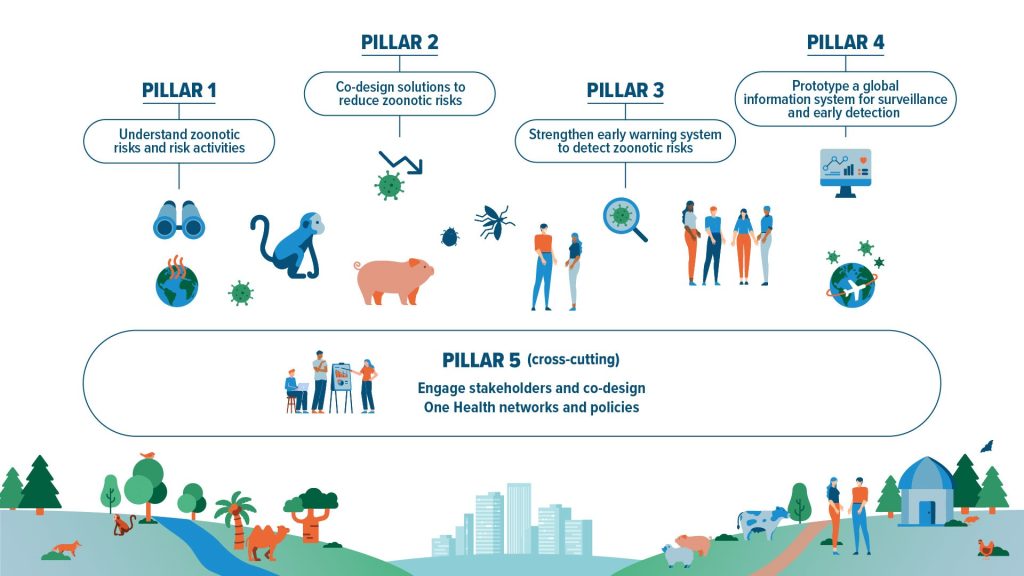The PREZODE initiative set up five Pillar Working Groups (PWGs), each composed of experts from various disciplines and sectors within the scientific community, to help deliver the five pillars of PREZODE’s goals and missions as presented in the Strategic Agenda.
The main goal of the PWGs is to bring together relevant experts to collaboratively develop joint recommendations and actions. This co-creation process aims to support international organizations and countries across the globe in preventing the emergence of zoonotic diseases. One of the primary objectives of these groups is therefore to update and revise, when needed, the list of operational needs and research gaps presented in the PREZODE Strategic Agenda.
A research framework
The PWGs are developing a research framework to understand the emergence of zoonoses in the context of global changes, with the aim of implementing coherent operational programmes. They identify concrete actions to enable the development of strategies that minimize human exposure to zoonotic pathogens without negatively impacting other public health dimensions, such as food security and nutrition. Finally, they establish synergies between PWGs and with different projects and initiatives worldwide by promoting collaborative research projects and reinforcing PREZODE network activities.
Specific objectives have been identified for each PWG, as follows:

Pillar 1. Understand zoonotic risks and risk activities
- Understand the mechanisms and drivers of zoonosis emergence.
- Determine what is a zoonotic emergence risk.
- Identify strategies to anticipate risks and decrease the likelihood of spillovers.
Pillar 2. Co-design solutions to reduce zoonotic risks
- Create a definition for a One Health solution.
- Map co-design methodologies for risk reduction strategies.
- Estimate the cost-effectiveness for a One Health solution.
- Co-learning/co-training of co-design methodologies.
Pillar 3. Strengthen early warning systems to detect zoonotic risks
- Assessment of current surveillance systems and practices: review operational surveillance systems and assess cost-effectiveness of surveillance systems.
- Stakeholders mapping and analysis of end-users’ perceptions.
- Innovation in early warning, surveillance protocols, and diagnostic tools.
Pillar 4. Prototyping a global information system for surveillance and early detection
- Identify potential barriers and gaps in each step of the data streams´ pipeline, from data collection to end-user’s analysis.
- Identify countries’ data collection and sharing needs for multi-sectoral collaborative surveillance to prevent EIDs.
- Develop clear guidance on how to strengthen infrastructure for data analysis and evidence-based support for decision making.
- Test infrastructure.
Pillar 5. Engage stakeholders and co-design One Health networks and policies (cross-cutting)
- Stakeholder engagement, including communities and civil society organizations, and development/consolidation of health networks and policies, development of platforms for permanent dialogue between scientists, society, and decision-makers, mapping of key actors.
- Participatory workshops and training, innovative approaches to awareness-raising.
- Evaluation of One Health prevention.
- Equity issues.
- Promoting One Health approaches and intersectoral collaboration.
- Support the PREZODE Strategy.